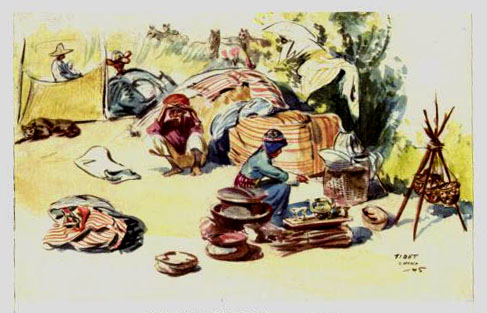
The following essay is from the "Landscape in Watercolor " section of ART INSTRUCTION, INC. course which was organized by Walter J. Wilwerding, who had been Norm's own art instructor when he "attended" the FEDERAL SCHOOL's art correspondence courses from 1925-1926.
_____________________________
LANDSCAPE IN WATER COLOR
One of a series of texts dealing with various phases of Art, prepared especially for Art Instruction, Inc. The courses include instruction and illustrations contributed by many leading artists.
ART INSTRUCTION, INC. Minneapolis, Minnesota, 1958 ---------------------
About Our Artist-Authors Norman Saunders Norman Saunders began his career in art in the art department of Fawcett Publications when their publishing office was in Minneapolis. In the thirties, when they moved their offices to New York, he moved to that city, not to work in their art department, but to open a free-lance studio in cover designing and illustration. For many years he did covers and illustrations for magazines. Then, during World War II, he joined the armed forces and was stationed in China. With the army engineering service, in charge of coolies laying gasoline pipelines for the armed forces, he obtained first-hand knowledge of the country and its people. Wherever he went, he took his water colors with him, sketching the country, the building and the people. When the war was over, he returned to this country with a portfolio bulging with beautiful water-color sketches and studies of China and Tibet. Many of these sketches were reproduced in color in the Fawcett magazines together with descriptive articles which the artist wrote to go with the pictures. In this textbook, we are privileged to show you some of his sketches, along with his article about his way of working in water color. Norman Saunders has is studio in New York in an old brownstone mansion that he bought for his home and studio, where he still does magazine covers and illustrations, when not occupied with painting for exhibitions.
---------------------------------------------------------

Painting on the Spot by Norman Saunders A working knowledge of rules and technical procedures is essential for an artist. These rules will not of themselves insure the production of fine paintings - but they will surely help!
This knowledge and technical versatility can best be achieved by the old formula of study, practice, and experimentation. Try all the available mediums, use the best materials you can find. Keep an open mind. And prepare yourself for every eventuality.
Personally, I find the field trip with a water-color sketch kit to be a pleasant and profitable way to break old habits, to develop new procedures, to study nature, to relax - and to learn.
PAPER
I prefer water-color sketch blocks for dry techniques. The wet paper procedure is pretty hard to manage on a field trip, unless you have a spot selected and the painting planned in advance. These sketch blocks can be secured in a variety of sizes. Most of my sketches of the Orient were on Whatman's 6"x 9" or 8"x 11". (I prefer to work larger when possible, but size is not to be confused with value or merit - a small, artistic painting tastefully matted can be very impressive.) Transportation and bulk were the deciding factors - not to mention the problems of purchasing the larger sizes. More than half of my sketches were made on ordinary writing paper.
COLORS
I use Winsor Newton tube colors whenever possible - cadmium yellow, vermilion, alizarin crimson, Winsor green or viridian, ultramarine, yellow ochre, venetian red, burnt sienna, and burnt umber. (The majority of the oriental sketches were produced with Indian tube colors - half of which were filled with an oily clay that was either ochre or raw umber regardless of the label.) I used three or four Winsor Newton water-color brushes, sizes 4. 8. 10 and 12, as well as an assortment of Chinese lettering brushes. These are excellent for sketching, with their fine point and thick body.
SUBJECT MATTER
Having outfitted oneself is but the beginning, however. Where and what to paint is of vital importance. I personally feel that the subject matter is the primary problem in any picture, and should be chosen carefully. Paint a subject worthy of your best efforts, something that you truly want for your own. Be careful not to lose your first reaction to the scene, the attitude it engendered. Keep this and your finished painting will have captured that elusive element called mood. Your own very personal approach to the subject will determine this all-important matter of subjectivity and feeling.
SKETCHING IN
Once the subject has been decided upon, I generally sketch the scene in very lightly with a pencil - black Prisma-color 935, or burnt sienna or light green pencil works nicely; green and blue are fugitive colors and recede into the background later as you develop the painting. (This is an old portrait painters' trick that works equally well in water-color or oil.) Sketch very lightly, making no attempt to pinpoint detail or action.
If you have time to finish the painting on the spot and the mood will not evaporate in the process, do it. But be careful not to let your sketch get too literal, with needlessly exaggerated detail. Very often you get better results if you sketch lightly in colored pencils just the faintest blush of color to remind you of the mood and then go on to another picture. You can paint the sketch up later in your studio, where nothing will distract you from the original mood. Many of my sketches were done that way.